For a long time, we have speculated that our galaxy and our universe are filled with other star systems with planets, moons, asteroids, and comets. Since the 90S we started to find the planets (or exoplanets as they are called) orbiting other stars (in some cases dead stars like pulsars). Later, with the help of space telescopes, we studied them. We thought that the other star systems and planets beyond our solar systems would rather be similar to ours.
But we were wrong.
It is our solar system which is odd. Let’s see 10 instances by which the Solar System differs from other star systems that scientists have discovered till now.
Table of Contents
Sun: Lonely Star in Solar System
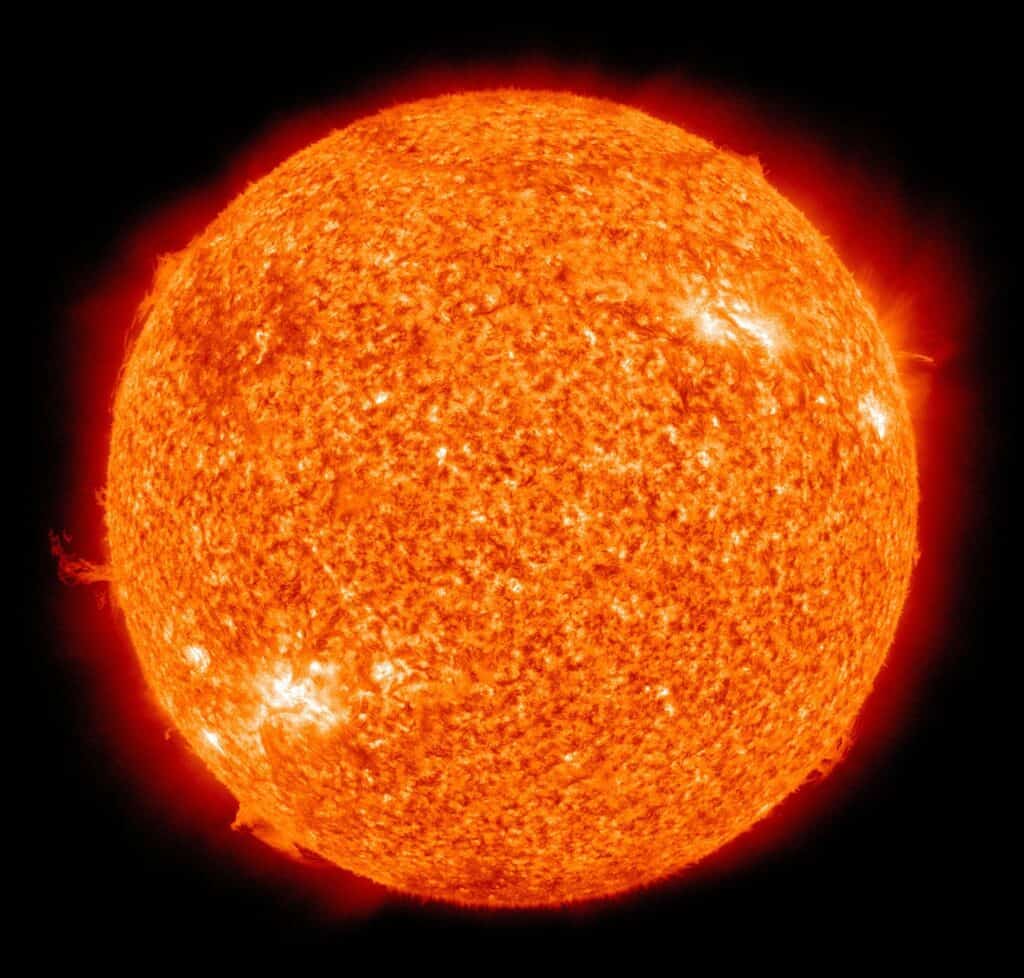
All the ancient civilizations of Earth had worshiped the Sun as a Deity and it truly is. The sun is our star. It gives us energy. It is the reason that planet Earth has life. We owe our life to the Sun. But the Sun is a lonely star that does not have any companion star. Sure it has many planets, Moons, Asteroid, and Comets but it does not have another of its kind. When scientists have looked to the sky they have found that most of the stars have one, two, or even three companion stars. For example, our nearest star system Alpha Centauri has three stars orbiting each other.
Some scientists speculate that the Sun might have a “Red Dwarf” – a type of star that can be 1/10th of the Sun’s mass – as a companion that orbits the far reaches of the Solar Systems. According to these scientists, this unknown red dwarf star, dubbed “Nemesis”, could be responsible for creating chaos in the Kuiper belt, hurtling comets and asteroids toward Earth, causing the periodic destruction of life on Earth. Scientists have surveyed the sky for this elusive companion of the Sun, but they have yet to find any evidence of it.
No Hot Jupiter

Some of the early exoplanets that we have discovered were nothing like we see in our Solar System. Just like Jupiter in our Solar System, they were big balls of gas but unlike our Jovian Planets, these planets would orbit their stars in very close proximity, at times even less than the 1/3rd the distance of Sun and Mercury. For that reason, these “Hot Jupiter” would have extreme temperatures, and due to that their gas would strip away into the void of the emptiness.
Scientists believe that, just like the Jovian planets of the Solar System, these Hot Jupiters have formed far away from their stars but for some reason, they have migrated close to their stars. These planets would eventually collide with their stars and be obliterated from existence.
The Solar System does not have any Hot Jupiter. Our Jovian planets were formed far from the Sun and they stayed there. They have not migrated inwards. There is a theory that states that in the early life of the Solar System, Jupiter was migrating towards the Sun. However, it was caught in the gravitational dance with Saturn and eventually was stopped from getting inward. Some scientists believe that in time Jupiter and Saturn could migrate inwards and become the Hot Jupiters while creating havoc in the inner Solar System.
Lack of Hot Neptune
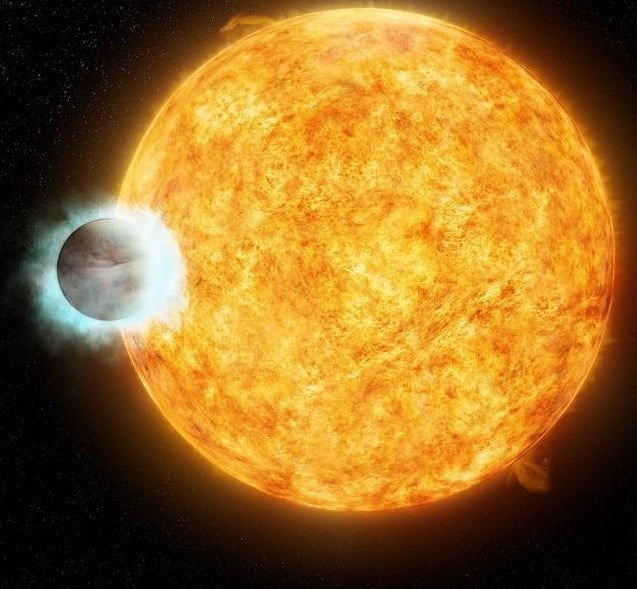
“Hot Neptune” is rather a sub-variant of Hot Jupiters. Instead of being Jupiter-sized, they are similar to Neptune or Uranus. But like Hot Jupiters, they also orbit their parent stars in close proximity. Just like Hot Jupiters, these Jovian planets have also formed far away from their planets but since have migrated inward due to some gravitational interplay. It is being theorized by the scientist that, since Hot Neptunes have less mass than more massive Hot Jupiters, they tend to wither away faster due to the extreme heat and radiation of their parent stars.
In our Solar System, we do not have any Hot Neptunes. Neptune and Uranus have formed far away from the /Sun and since then they have not yet migrated inwards. In Jupiter’s case, it is Saturn that has stopped its advance. In the case of Uranus and Neptune, it is the complicated gravitational interactions among all these four Jovian planets that have bound these planets into stable gravitational orbits.
Absence of Helium Planet
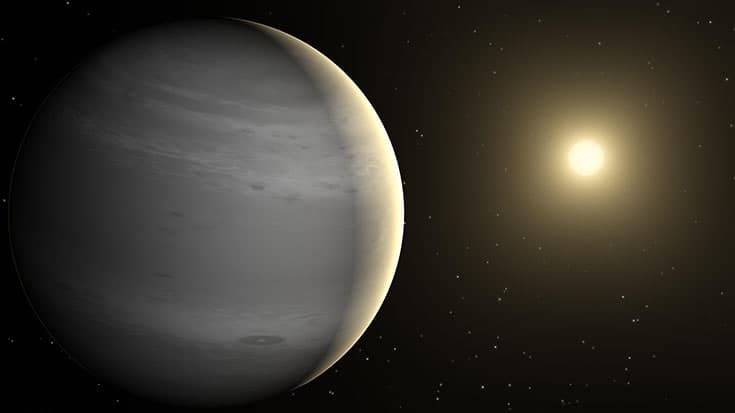
Another type of planet we don’t see in our Solar System but can be found in other star systems is Helium Planets. These planets are gaseous planets that have plentiful Helium gas in their environment. In the Solar System, four of the Jovian planets do have Helium in their atmosphere but 80% – 90% of their atmosphere is made of Hydrogen. In contrast, Helium planets are mostly made of Helium.
These planets could come into existence from White Dwarfs which have a binary companion star. White Dwarfs are remnants of medium to small-sized stars. After the star, like our Sun or a red dwarf, fuses all its Hydrogen into Helium, it swells into a red giant. Then it slowly sheds its outer layers one by one and in the end, only a dense core remains. Then the companion binary star gobbles up most of the mass of the White Dwarf through gravitational force. What could remain out of this process is a planet made of dense atomic Helium.
There is another process through which Helium Planets could form. It is being hypothesized by scientists that some of these Helium Planets initially had Hydrogen in their atmosphere. But then, like Hot Jupiter and Hot Neptune, they have migrated close to their stars. As Hydrogen is the lightest material in the Universe, due to the extreme heat of the parent star, it evaporates from the atmosphere of these gas giants into the vastness of space. After the most of Hydrogen evaporates, Helium constitutes most of the atmosphere of the planet.
Non-existence of Super Earths
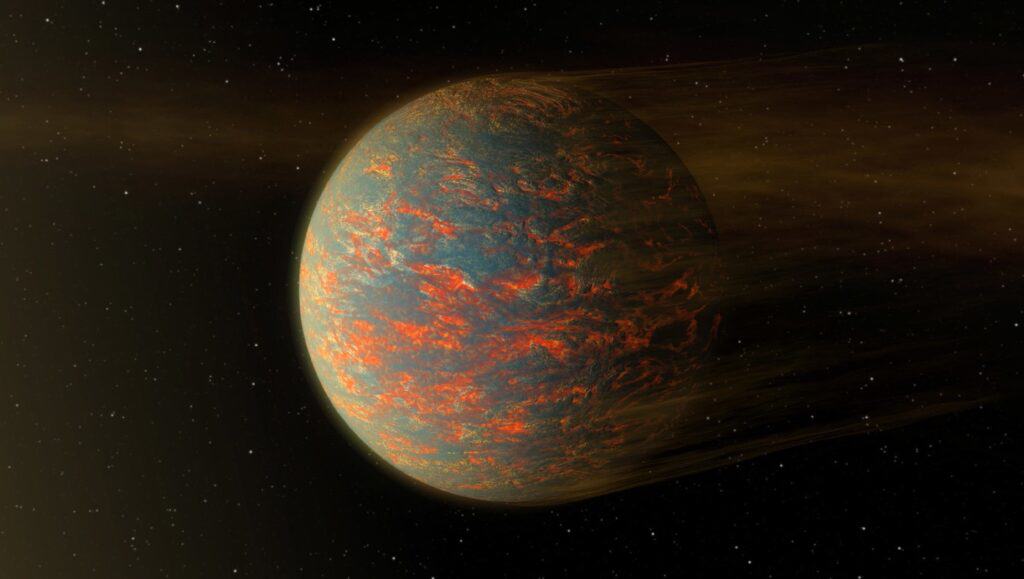
In our Solar System, Earth is the largest rocky planet. Venus comes very close to the Earth in terms of diameter and mass. Then there is a big gap between the largest rocky planet, Earth, and the smallest Jovian planet, Neptune. Outside our Solar System, scientists have found rocky planets that can be 10 times or more the mass of Earth. These are called “Super-Earths”.
Scientists speculate that the conditions on these “Super-Earths” may not be conducive for humans. These planets, due to their huge mass, would have a gravitational force that would be far greater than that of Earth. Due to that, the “Super-Earths” would have a very thick atmosphere and their surface pressure would be extremely high. Also, due to their extreme gravitational force, they would be very temperate and would have an extremely humid climate.
A strange fact is that we do not have these types of planets in our Solar System. When our Solar System had just formed, it would have more than just 8 planets which collided and merged and eventually shaped the current structure of our Solar System. Scientists believe that early in our Solar System there were Super-Earths.
However, at some point in the past Jupiter had started to migrate inwards. Although Saturn stopped Jupiter’s advance, its immense gravitational force had created chaos in the surrounding area. Some of the existing Super Earths were ejected out of the Solar System and some were thrown towards Sun. The rest of them had collided with each other. This way Solar System had lost all its original Super-Earths. From the debris of these giant rocky planets, smaller-sized rocky planets were formed.
No Exotic Orbits in Solar System
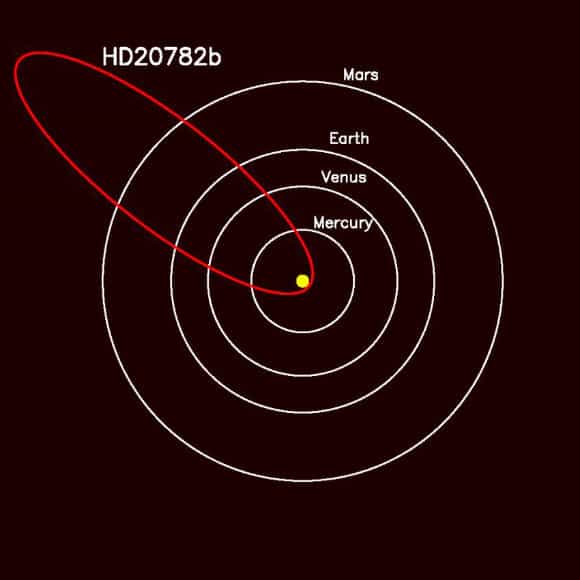
Exotic Orbit of Exoplanet HD 20782b superimposed on Solar System.
In our Solar System, the planets orbit the Sun in near elliptical orbits. These orbits are stable and they do not take the planets far away or far near to the Sun (relatively speaking). Also, these orbits exist on a similar (almost) flat plane.
But, outside the Solar System, scientists have found some weird and exotic orbits that we don’t see in our Solar System. Scientists have found planets with elongated orbits in which the planet comes as near to its star as Mercury to our Sun and then goes as far as Neptune. Some of these planets can take even up to thousands of years just to orbit their stars once.
Then some planets orbit their stars while being perpendicular to each other’s orbits. Scientists hypothesize that these exotic orbits are due to the planets being captured by the stars from some other star systems. It is also possible that these planets were “rogue planets” which were wandering in the vastness of space and when they came too close to a star, its gravity attracted the planets and made them its own.
No Ocean World
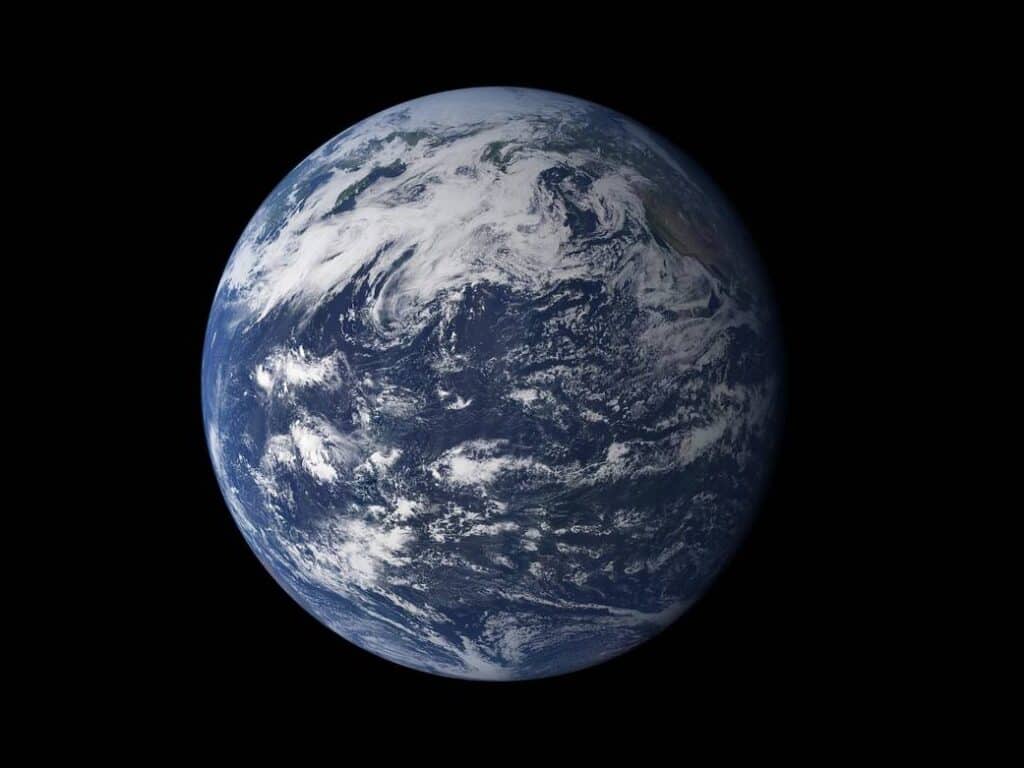
Another type of planet that scientists have found in abundance in other Star Systems is the “Ocean World”. These types of worlds would have a rocky core and surrounding the core would be water. It could have a very small amount of dry land on the surface area of the planet. Then again, in some cases, the entire land mass of the planet would be submerged into an endless ocean.
Even though Earth has an abundance of water, still its 30% of its surface area has dry lands. In the Solar System, a close approximation of Ocean World would be Jupiter’s moon, Europa. It has a metal core and surrounding the metal core is a water–ice crust. Close observation has shown cracks in the crust and from those crust, water vapor comes out into the atmosphere. All these indicate the existence of a subsurface ocean beneath the icy crust.
At the end of the Sun’s life cycle, it will turn into a red giant and will get bigger and hotter. At this point in time, the Sun’s extreme heat could melt the icy crust of Europa and turn it into a true Ocean World.
No Carbon Planets

Another type of planet we see in the cosmos but not in the Solar System is Carbon Planet. In the cosmos, there are many carbon-rich stars. Upon the destruction of these stars, the resulting nebula would be carbon-rich. From this nebula will form carbon-rich planets with more carbon than oxygen. Whatever oxygen these planets would have would be soaked up by its carbon. The environment of these planets would not be conducive to life as we know it.
The atmosphere of these planets would be filled with gasses such as CO2 and CO and thick smog would blanket the environment. The surface of these planets could form out of graphite. Liquid hydrocarbon substances could exist in the form of lakes, rivers, and oceans. If there is sufficient pressure, diamonds could form below the surface or in the interior of the planets. These diamonds could come out during geological activities.
As our Sun is not a carbon-rich star, we don’t have these types of planets. Our planet Earth and other rocky planets of the Solar System are silicate-based planets. Oxygen and silicon are two of the most abundant materials in the crusts of these planets. As silicon is not as reactive as carbon, it did not soak up all the oxygen in the environment of Earth. Hence our Earth is able to harbor oxygen-based life forms.
Nothing in between Sun and Mercury
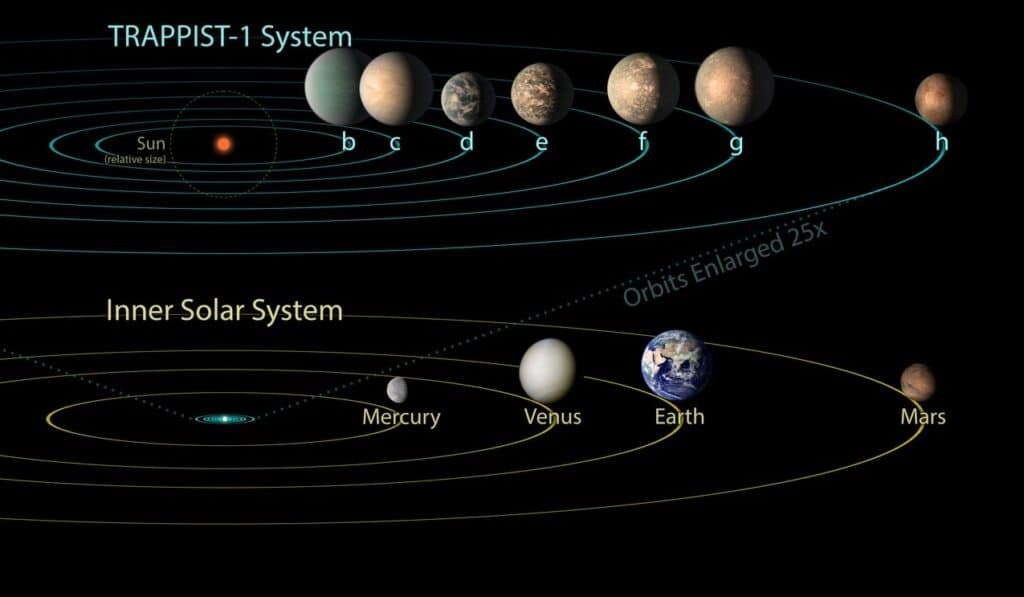
The average distance between the Sun and the Mercury is around 60 million kilometers or 0.4 AU [1 AU (Astronomical Unit) = Average distance between Sun and Earth]. No celestial body exists between the Sun and Mercury.
However, when scientists looked in space, they found that in other star systems, multiple planets exist within the distance between our Sun and Mercury. Many Hot Jupiters and Hot Neptunes orbit their parent stars closer than Mercury to the Sun. For example, the distance between Proxima Centauri b and its parent star Proxima Centauri, the closest star to our Sun, is only 0.05 astronomical units.
In a star system called TRAPPIST – 1, as many as 7 rocky planets orbit its red dwarf star closer than Mercury orbits Sun. The closest of planet is only 0.011 AU away from its parent star while the most far away planet is 0.06 AU away from the parent star.
Advanced–Intelligent Life
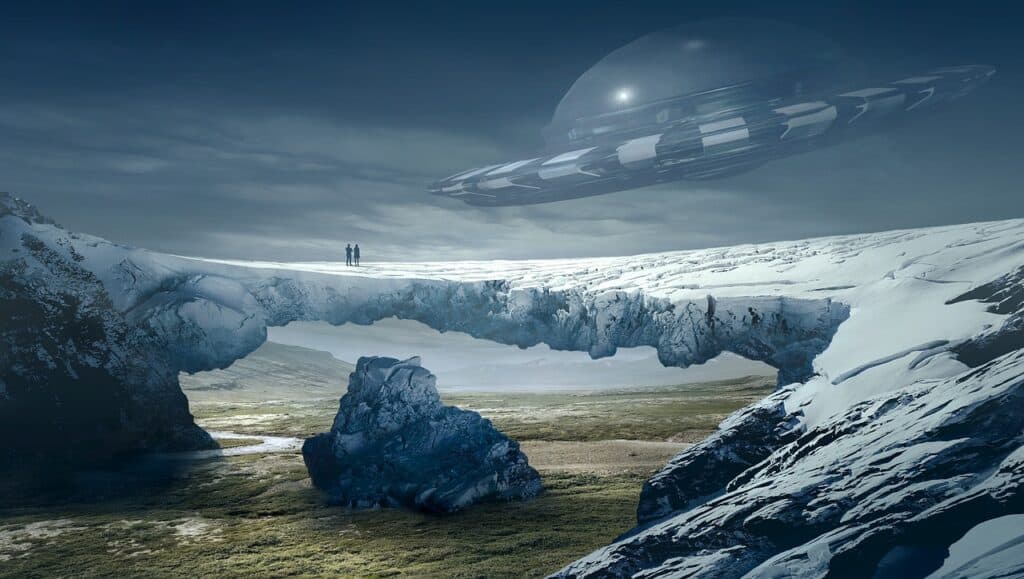
The materials which formed life are abundant in the Universe. If a rocky world is within the habitable zone of its planets and if it has liquid water, it could very well harbor some form of life. Till now in the Solar System, we have not found any other planet or moon with life, primordial or advanced.
However, scientists believe that there could have been primordial life on Mars. Mars is in the outer reaches of the habitable zone from the Sun and there is enough evidence to suggest that there has been liquid water on Mars. Scientists also believe that various moons of Jupiter and Saturn could harbor simple life in the deep oceans beneath their icy crust. The enormous gravitational pull of these Jovian planets could stretch these moons creating friction heat that could melt the ice beneath the icy crust.
Even if we have not found any life outside the Solar System, there is a probability that, if we look closely, we could find simple life in other parts of the Solar System. Also, discoveries made by the Kepler Space Telescope and James Webb Space Telescope have shown that rocky planets within the habitable zone of their parent star might not be so rare. So it can be concluded that if we look closely and carefully, we might find simple life in the Solar System and even outside the Solar System.
However, finding an advanced intelligent life is a completely different matter altogether. Theoretically finding intelligent life should not be hard as any intelligent life form would leave its print on its planets. Intelligent life forms would alter the environment of its planets in such a way that it would be detectable even from Earth. Any life form, which is at least as advanced as humans, should have sent a satellite into space and have learned about communicating through radio signals. Any life form, that is more advanced than humans, would have conquered their star systems and would have ventured beyond the boundaries of their star system.
On Earth, it took 4.5 Billion years for the emergence of intelligent life and it has been around 14 Billion years since Big Bang. But we have not found any such signs. We have not seen any planets with visible signs of intelligent life. We have sent many radio signals in space but have not received any reply. We have not received any form of communication which might come from an intelligent life form. So, till now, our Earth and Solar System remain the only place where advanced–intelligent life forms can be found.
Read More
- Our Universe: An Incredible Journey of 13.7 Billion Years
- Indian Gooseberry (Amla): 10 Amazing Facts About This Wonder Fruit
- Top 6 Solar System Objects That Might Destroy Life On Earth
- The Great Physicist Peter Higgs Passes Away at 94
- Certain End of The Universe: 4 Forces of Nature to Watch Out For
- Big Bang: An Incredible Start of Universe 14 Billion Years Ago




